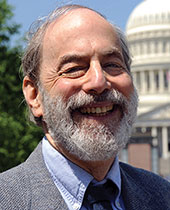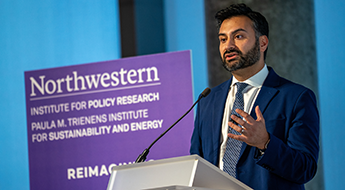The Balancing Act of a Strong College Counseling Program
Get all our news
Without additional resources and greater clarity about the role of counselors, we suspect that this balancing act will continue to be a challenge for schools.”
James Rosenbaum & Gorana Ilic

High school guidance counselors can have a significant impact on whether young people pursue higher education. IPR researchers find adding resources to a high school counseling office can boost college going, but most are typically understaffed and juggling large caseloads and competing demands.
In Phi Delta Kappan, a professional magazine for educators, IPR education researcher James Rosenbaum and IPR research coordinator Gorana Ilic outline the successes and trade-offs they found in one urban high school counseling office.
Rosenbaum and Ilic studied a public high school—serving almost 2,000 students, most of whom are low-income and minority—that built an extraordinarily strong advising program. An unusual level of commitment, coordination, and support helped this high school reach a college enrollment rate 20 percentage points higher than others in its district and 10 percentage points higher than others in the state.
At the same time, “the same powerful coordinated supports that are so effective at boosting college enrollment also raise concerns about how well the school serves other student needs,” they wrote. “Without additional resources and greater clarity about the role of counselors, we suspect that this balancing act will continue to be a challenge for schools.”

The high school’s principal made attending college a priority and worked to get everyone on board, which helped counselors steer students toward college.
“With our current principal, [the school climate is] one word: college,” one counselor explained. “So every class, from English to P.E., has a core of preparing students for college.”
Strong district support—including hiring full-time college advisors—also benefited the counseling process.
Additionally, the high school developed strong relationships with colleges, repeatedly seeking out opportunities for their students. These personal connections with college representatives often helped to get marginal students admitted.
“Colleges tend to trust the counselors’ judgment because they know that the counselors value their relationship and would not risk losing it by guiding them wrong,” Rosenbaum and Ilic wrote.
The Cost of Effective High School Counseling
However, counselors in the study also expressed misgivings about the trade-offs they have to make to move students into higher education.
Some qualified the high school’s college climate as “very ambitious, very aggressive,” worrying about college conversation “overkill.” As one counselor lamented, this one-size-fits-all approach sends the message that going to college after high school is “the natural order of things”—and might not be serving students who have plans that do not include attending college.
“Counselors told us that they would like to spend more time helping students with social-emotional problems but are not able to do so because college guidance, the school’s priority, takes most of their time,” the researchers wrote.
Even when counselors and principals agree that college advising should be part of the counselor’s job, counselors are not always specifically trained for this work. For instance, counselors knew very little about occupational programs and associate's degrees offered at community colleges.
“The misalignment between counselors’ training and their actual job tasks is indicative of larger underlying issues that cannot be ignored,” they wrote.
James Rosenbaum is professor of education and social policy, and of sociology, and an IPR fellow. Gorana Ilic is an IPR research coordinator.
This article by Julie Deardorff has been edited from the original that first appeared on SESP's website.
Published: November 5, 2019.


